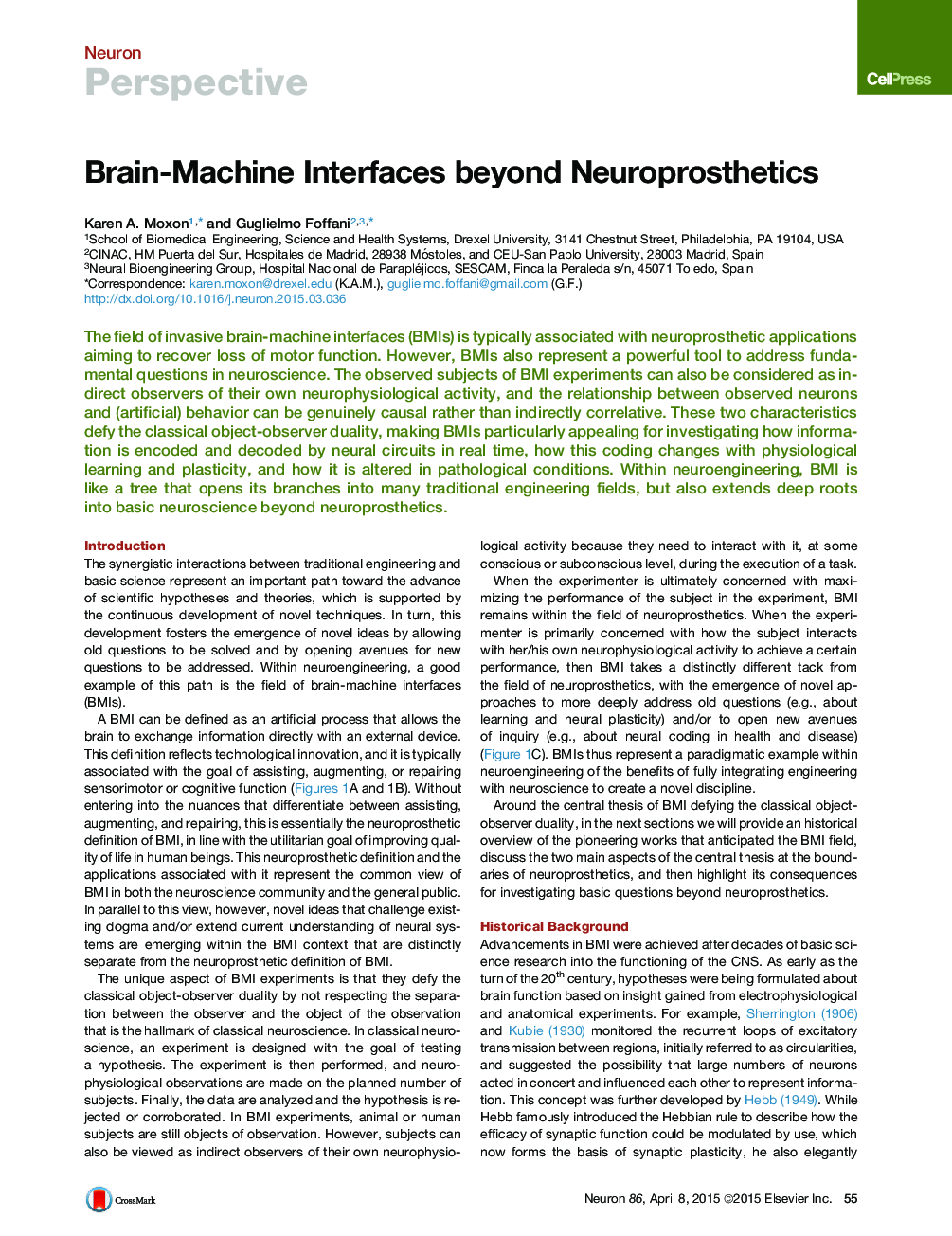| Article ID | Journal | Published Year | Pages | File Type |
|---|---|---|---|---|
| 4320998 | Neuron | 2015 | 13 Pages |
The field of invasive brain-machine interfaces (BMIs) is typically associated with neuroprosthetic applications aiming to recover loss of motor function. However, BMIs also represent a powerful tool to address fundamental questions in neuroscience. The observed subjects of BMI experiments can also be considered as indirect observers of their own neurophysiological activity, and the relationship between observed neurons and (artificial) behavior can be genuinely causal rather than indirectly correlative. These two characteristics defy the classical object-observer duality, making BMIs particularly appealing for investigating how information is encoded and decoded by neural circuits in real time, how this coding changes with physiological learning and plasticity, and how it is altered in pathological conditions. Within neuroengineering, BMI is like a tree that opens its branches into many traditional engineering fields, but also extends deep roots into basic neuroscience beyond neuroprosthetics.
